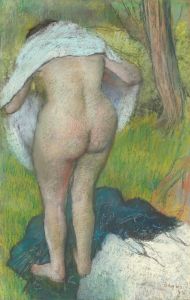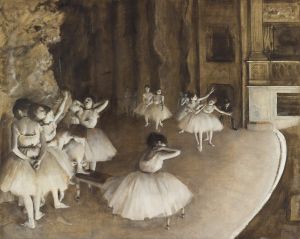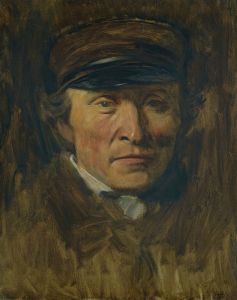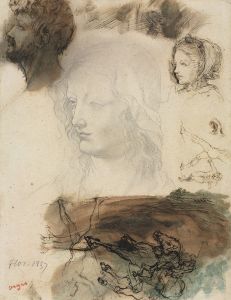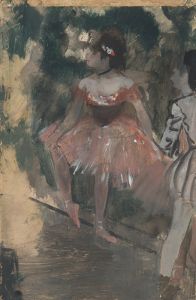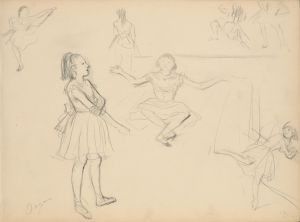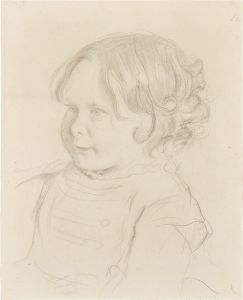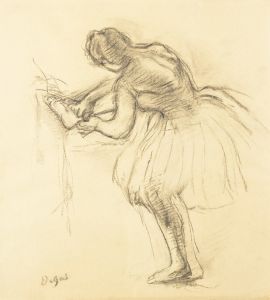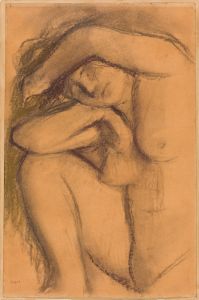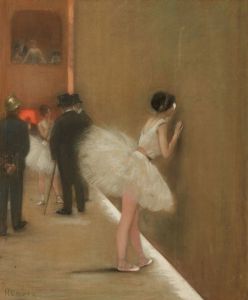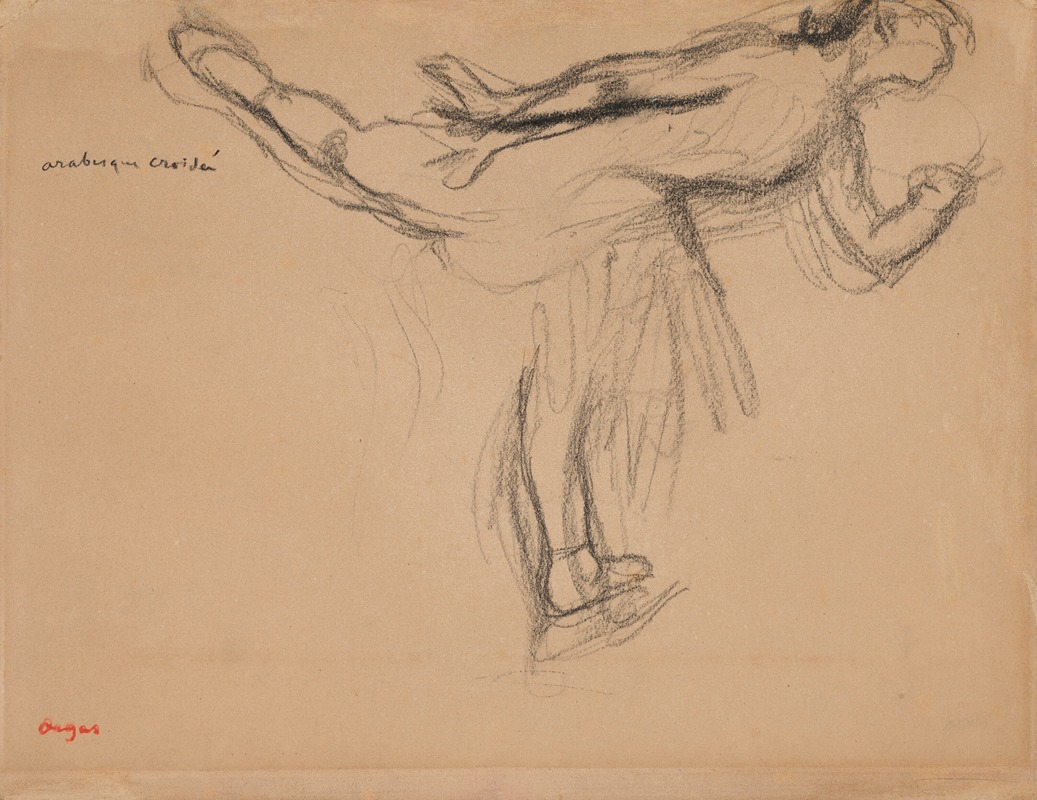
Danseuse, arabesque croisée
A hand-painted replica of Edgar Degas’s masterpiece Danseuse, arabesque croisée, meticulously crafted by professional artists to capture the true essence of the original. Each piece is created with museum-quality canvas and rare mineral pigments, carefully painted by experienced artists with delicate brushstrokes and rich, layered colors to perfectly recreate the texture of the original artwork. Unlike machine-printed reproductions, this hand-painted version brings the painting to life, infused with the artist’s emotions and skill in every stroke. Whether for personal collection or home decoration, it instantly elevates the artistic atmosphere of any space.
Edgar Degas, a prominent French artist associated with the Impressionist movement, is renowned for his depictions of dancers, capturing the grace and dynamism of ballet. One of his notable works in this genre is "Danseuse, arabesque croisée," which translates to "Dancer, Crossed Arabesque." This artwork exemplifies Degas's fascination with the world of ballet and his innovative approach to composition and movement.
Degas was born in Paris in 1834 and began his artistic career with a focus on history painting. However, he gradually shifted his attention to contemporary subjects, particularly the ballet dancers of the Paris Opera. His interest in ballet was not merely aesthetic; it was also a reflection of his desire to capture modern life and its fleeting moments. Degas's works often depict dancers in rehearsal or backstage, providing an intimate glimpse into their world.
"Danseuse, arabesque croisée" is part of a series of works by Degas that explore the theme of dance. In this piece, Degas captures a dancer in the arabesque position, a classic ballet pose characterized by one leg extended behind the body while the other supports the dancer's weight. The term "croisée" indicates that the dancer's body is oriented at an angle, adding a sense of depth and complexity to the pose.
Degas's technique in this work reflects his mastery of form and movement. He often employed pastels, a medium that allowed him to achieve a delicate balance between line and color. The use of pastels enabled Degas to create soft, blended tones that convey the fluidity and grace of the dancer's movements. His attention to detail is evident in the rendering of the dancer's musculature and the subtle play of light on her costume.
The composition of "Danseuse, arabesque croisée" is notable for its asymmetry and dynamic balance. Degas frequently experimented with unconventional perspectives and cropping, drawing inspiration from Japanese prints and photography. This approach is evident in the way the dancer is positioned within the frame, suggesting movement beyond the confines of the canvas.
Degas's portrayal of dancers was not limited to their performances on stage. He was equally interested in the rigorous training and discipline that ballet demanded. His works often depict dancers stretching, practicing, or resting, capturing the physical and emotional toll of their art. This focus on the behind-the-scenes aspects of ballet set Degas apart from his contemporaries and provided a more nuanced understanding of the dance world.
"Danseuse, arabesque croisée" is a testament to Degas's ability to convey the beauty and complexity of ballet. Through his innovative use of composition, color, and perspective, Degas created a work that continues to resonate with audiences today. His depictions of dancers remain some of the most celebrated and enduring images in the history of art, offering a window into the elegance and discipline of ballet.
Degas's influence extends beyond his lifetime, as his works have inspired countless artists and continue to be studied for their technical brilliance and emotional depth. "Danseuse, arabesque croisée" is a prime example of Degas's artistic vision and his enduring legacy as a master of capturing the human form in motion.







